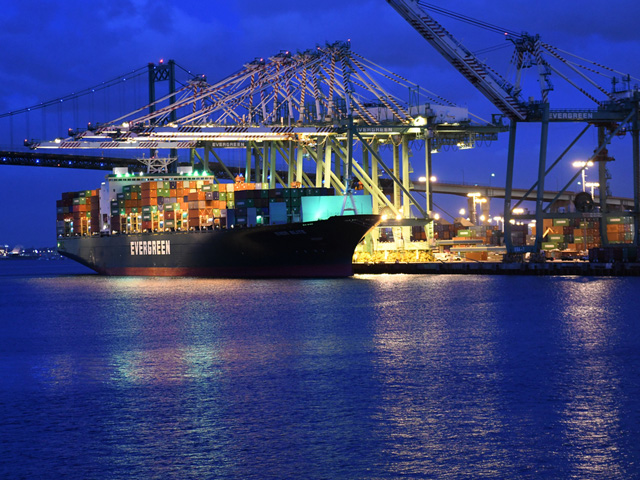Cash Market Moves
Webinar Highlights Impact of COVID-19 on Global Logistics
On May 21, the Washington International Trade Association (WITA) held a webinar to explore what trade policymakers can do to adapt to this new world and contribute with bold and meaningful initiatives. During the webinar, entitled "COVID-19 & Trade: Ports, Logistics, and Global Supply Chains," the panel discussed the impact of COVID-19 on global logistics, how companies have reacted and the opportunities that have arisen as a result.
Moderator Evelyn Suarez began the webinar by asking the panelists how the pandemic has been affecting trade, which led to a discussion with Phil Levy, chief economist, Flexport, on recent decreases in the rate of airfreight transportation on commercial flights as well as ocean shipping. Curtis Robinhold, executive director, Port of Portland, noted that marine port tonnage has also declined and noted a fast dip in automobile imports. Ralph Carter, staff vice president, regulatory affairs, FedEx Corporation, outlined the changes made within FedEx to ensure the health and safety of the company's frontline workers by increasing virtual operations while also managing varying regulations employed by countries all over the world.
Here is a link to the entire webinar: https://www.wita.org/…
AG CONTAINER EXPORTS SHOWING SOME RECOVERY
Bruce Abbe, strategic adviser for trade and transportation, Specialty Soya and Grains Alliance (SSGA), summarized the effects of the COVID-19 pandemic on container shipping in a May 26 article on the SSGA website. The first months of 2020 saw many trade disruptions, starting with normal import and export cutbacks during January's Chinese New Year period. "That was followed by the roller-coaster ride of trade during the COVID-19 global virus crisis," said Abbe.
P[L1] D[0x0] M[300x250] OOP[F] ADUNIT[] T[]
Major reductions in container shipping followed in February due to quarantines of port operations and halted manufacturing in China. A surge in imports of critical goods into the U.S. that were under backlog in late February and early March once manufacturing restarted came next.
"But that was followed by a rash of canceled blank sailings in March and April as severe cutbacks in import demand emerged as the economic impact on global business operations due to the virus came to fruition," said Abbe. According to the Universal Cargo website, blank sailing is a term that means no sailing, or perhaps more precisely, canceled sailing. (A blank sailing refers to a sailing skipping one specific port while still traversing the rest of the scheduled route or the entire sailing being canceled.)
"Short notice cancellations of sailings have proven to be an especially difficult problem for many inland exporters, like SSGA members whose containers travel 10 to 14 days by rail just to get to the ports and longer times on the water to get to customers," added Abbe.
"Although carriers cancel sailings because of declining U.S. imports, which constitute the headhaul lane in the Trans-Pacific, when imports of containers moving to inland population centers decline, there are fewer containers available at urban hubs to be unloaded and refilled with export commodities," noted Abbe. "That creates equipment shortages for agricultural shippers in the interior of the country." (Headhaul defines the highest revenue-generating shipping lane from shipper to consignee.)
I spoke with Abbe at the Northern Commodity Transportation Conference in Bloomington, Minnesota, on March 11, and at that time, he said there was a slow path to recovery. In a March 24 article on the SSGA website, Abbe noted that China's manufacturers were back at work and the rash of blank sailings of container vessel shipments was reportedly ending.
However, the article noted that "in a much more unfortunate development on the container supply front," some SSGA member exporters reported that because many U.S. ethanol plants shut down or slowed operations, distillers dried grain with solubles (DDGS) exports, a major user of containers, were negatively affected due to the loss of production.
In the DTN weekly distillers dried grains (DDG) price update, DDG offers were hard to come by in March and the few offers available were high. As production at ethanol plants has begun to slowly increase, more offers surfaced, and not only have prices returned to pre-COVID-19 levels, they are now lower. Demand for DDG in feed rations was down as some feeders moved away from DDG inclusion when prices spiked. While the supply chain is not yet close to being back to normal, feeders are beginning to include DDG in their rations once again, especially due to the lower prices right now.
In their weekly DDGS export price update, U.S. Grains Council noted that DDGS prices were slightly higher for the week ended May 28 as international demand is picking up. "Barge CIF NOLA offers are steady to $5 higher while FOB NOLA offers are up $2 to $3 per metric ton (mt). U.S. rail rates have ticked slightly higher as well. However, prices for 40-foot containers to Southeast Asia were down for the week, averaging $232/mt."
The outlook for container exports isn't all gloomy. "The trade is optimistic about export prospects for identity-preserved (IP) food grade soybean suppliers because in a recession, Asian consumers may choose to revert back to traditional nutritional soy foods, long a staple in their diets, and forego more expensive meats," noted SSGA board member Rob Prather of Global Processing.
Mary Kennedy can be reached at mary.kennedy@dtn.com
Follow her on Twitter @MaryCKenn
(c) Copyright 2020 DTN, LLC. All rights reserved.




